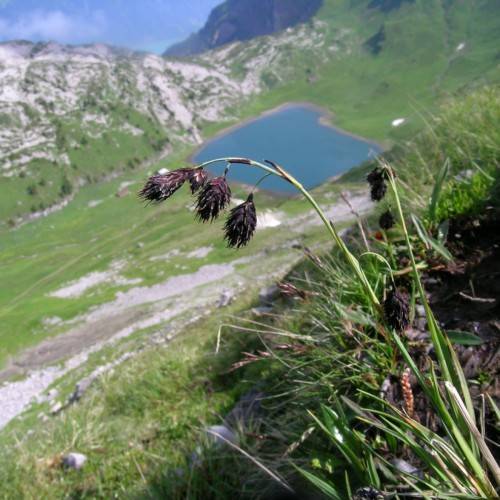
Scorched Alpine Sedge
Carex atrofusca
Also Known As - Darkbrown SedgeWatering:
Minimal
Hardiness Zone:
Sun:
full sun,part shade
Leaf:
Yes
Growth Rate:
Low
Drought Tolerant:
Yes
Salt Tolerant:
Yes
Invasive:
Yes
Care Level:
Medium
watering
Blackened Sedge should be watered thoroughly but infrequently. During the summer months, a deep watering once per week is recommended. It should be avoided to get the leaves wet during the hot summer months. During the winter, watering can be reduced to once a month. The soil should be allowed to dry out between waterings. When watering, soak the soil until damp but not waterlogged.
sunlight
Blackened Sedge (Carex atrata) typically grows best in full sunlight and does best when exposed to 6-8 hours of sunlight per day. It can handle some partial shade, but this should be limited to light shade for no more than 2 to 3 hours in the afternoon. If grown in too much or too little shade, it may become leggy, thin, and lose its lovely shape. If grown in full sun its foliage will stay lush and deep green.
pruning
Blackened Sedge (Carex atrata) should be pruned in early spring before new growth begins. Pruning encourages the plant to branch out, which will improve its shape and overall size. To prune, cut back the stems that are too long and those that are dead or damaged. You can also divide overcrowded clumps of the sedge during this time. Doing this will promote a bushier habit that will both look better and manage better. It is beneficial to remove flower heads because they will take away the plants energy and strength to focus on foliage growth.
